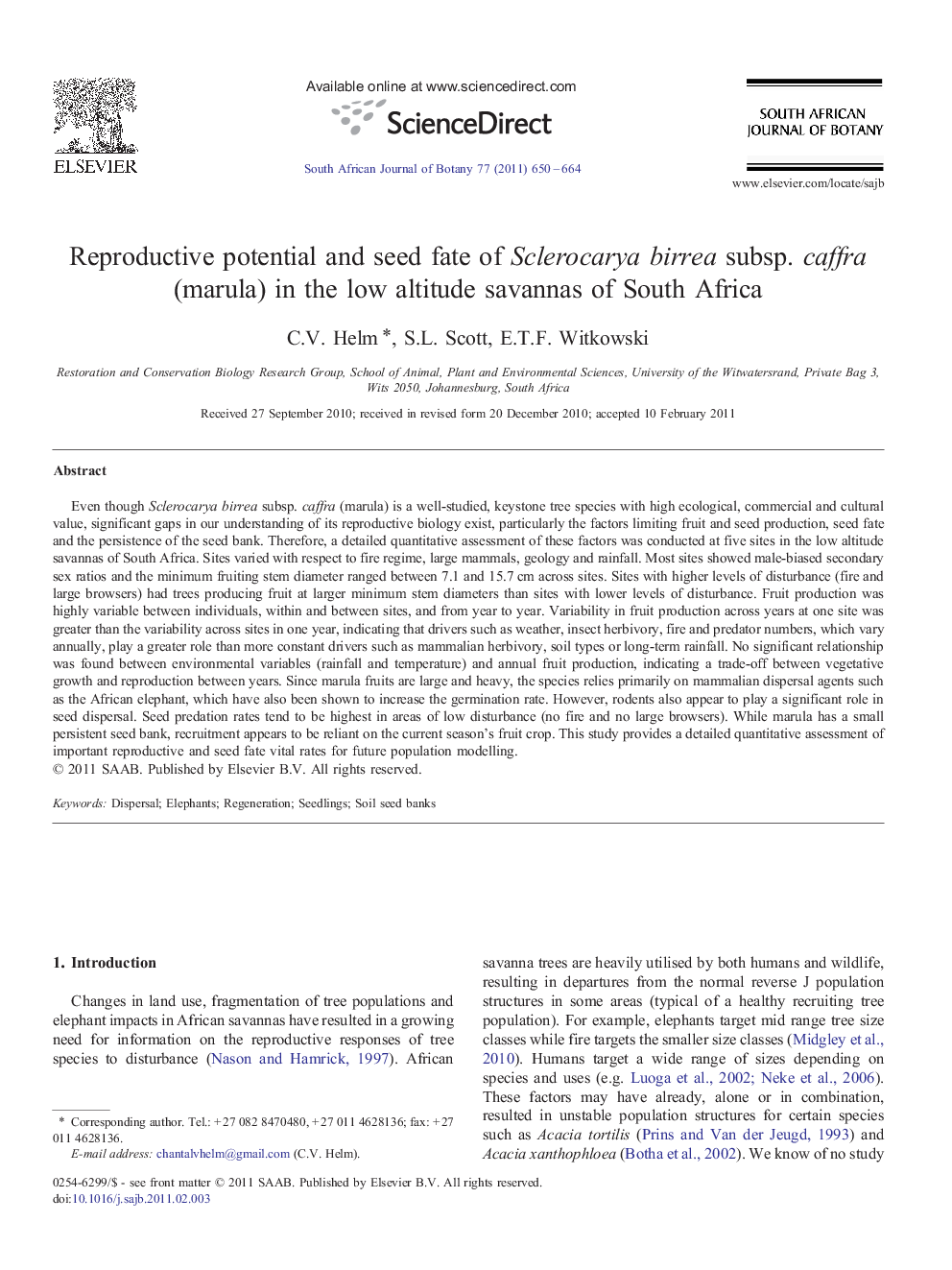| کد مقاله | کد نشریه | سال انتشار | مقاله انگلیسی | نسخه تمام متن |
|---|---|---|---|---|
| 4521211 | 1625182 | 2011 | 15 صفحه PDF | دانلود رایگان |

Even though Sclerocarya birrea subsp. caffra (marula) is a well-studied, keystone tree species with high ecological, commercial and cultural value, significant gaps in our understanding of its reproductive biology exist, particularly the factors limiting fruit and seed production, seed fate and the persistence of the seed bank. Therefore, a detailed quantitative assessment of these factors was conducted at five sites in the low altitude savannas of South Africa. Sites varied with respect to fire regime, large mammals, geology and rainfall. Most sites showed male-biased secondary sex ratios and the minimum fruiting stem diameter ranged between 7.1 and 15.7 cm across sites. Sites with higher levels of disturbance (fire and large browsers) had trees producing fruit at larger minimum stem diameters than sites with lower levels of disturbance. Fruit production was highly variable between individuals, within and between sites, and from year to year. Variability in fruit production across years at one site was greater than the variability across sites in one year, indicating that drivers such as weather, insect herbivory, fire and predator numbers, which vary annually, play a greater role than more constant drivers such as mammalian herbivory, soil types or long-term rainfall. No significant relationship was found between environmental variables (rainfall and temperature) and annual fruit production, indicating a trade-off between vegetative growth and reproduction between years. Since marula fruits are large and heavy, the species relies primarily on mammalian dispersal agents such as the African elephant, which have also been shown to increase the germination rate. However, rodents also appear to play a significant role in seed dispersal. Seed predation rates tend to be highest in areas of low disturbance (no fire and no large browsers). While marula has a small persistent seed bank, recruitment appears to be reliant on the current season's fruit crop. This study provides a detailed quantitative assessment of important reproductive and seed fate vital rates for future population modelling.
Research Highlights
► Fruit production varies between individuals, within and between sites, and annually.
► Recruitment is heavily reliant on the current season's fruit crop.
► Mammalian dispersal agents could increase germination rate.
► Quantitative assessments provide vital rates for population modelling.
Journal: South African Journal of Botany - Volume 77, Issue 3, August 2011, Pages 650–664